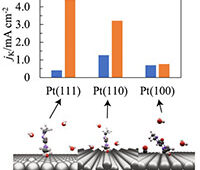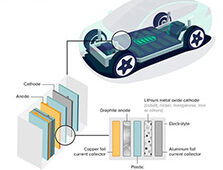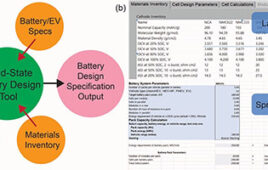 A team of scientists stationed at Department of Energy’s Pacific Northwest National Laboratory (PNNL) worked in conjunction with University of Washington researchers who’ve initially set out to test the viability of a rechargeable zinc-manganese oxide battery, which would be a cheaper, safer alternative to its lithium-ion brethren.
A team of scientists stationed at Department of Energy’s Pacific Northwest National Laboratory (PNNL) worked in conjunction with University of Washington researchers who’ve initially set out to test the viability of a rechargeable zinc-manganese oxide battery, which would be a cheaper, safer alternative to its lithium-ion brethren.
Both zinc and manganese are abundant, inexpensive materials. However lithium has become a valuable element being eyed as the future of energy storage sending prices skyrocketing to an estimated $13,000 per ton. An added benefit of this zinc-manganese alternative—it has higher energy density when compared to lead-acid batteries.
The PNNL experiment entailed building, “their own battery with a negative zinc electrode, a positive manganese dioxide electrode and a water-based electrolyte in between the two,” according to PNNL’s announcement.
The researchers repeatedly charged and discharged the battery, but early results indicated the invention was losing its storage ability after a few charging cycles. Further examination revealed the manganese component of the battery’s positive electrode begins to shed, causing the battery’s active material for energy storage to become inaccessible.
Ultimately, the team infused a new test battery with extra manganese ions to the aforementioned electrolyte in order to reduce the dissolution of the material. A new round of tests yielded a final product that could retain 92 percent of its storage capacity over 5,000 cycles with an estimated 285 milliampere-hours per gram of manganese oxide, added PNNL’s statement.
More research is needed to understand the battery’s operational capabilities, but it’s a beneficial first step in refining a renewable energy storage system.
Inventive renewable energy solutions has attracted considerable interest from both the scientific communities and tech companies. Government agencies like the Advanced Research Projects Agency-Energy (ARPA-E) are working on large-scale energy storage systems to incorporate solar capabilities into existing power grids whereas tech titan Bill Gates uses his foundation to subsidize ideas aimed at lowering greenhouse gas emissions.
R&D 100 AWARD ENTRIES NOW OPEN:
Establish your company as a technology leader! For more than 50 years, the R&D 100 Awards have showcased new products of technological significance. You can join this exclusive community! Learn more.




